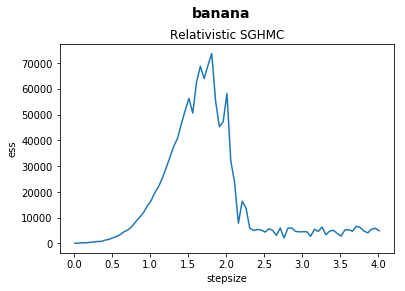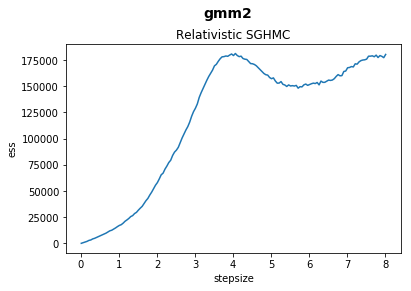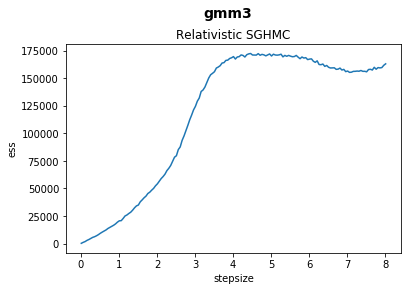Effective Sample Sizes¶
In this notebook we explore and plot the relationship between stepsize and effective sample sizes of our samplers on various benchmark functions.
In [26]:
%matplotlib inline
import matplotlib.pyplot as plt
import numpy as np
from string import capwords
import json
from os.path import abspath, basename, splitext
from glob import glob
samplers = (
"Relativistic_SGHMC", "SGHMC", "SGLD", "SVGD",
)
functions = (
"banana",
# "gmm1", no data yet!
"gmm2",
"gmm3"
)
data_files = glob("{}/*".format(abspath("./data/effective_sample_sizes")))
for data_file in data_files:
sampler, file_extension = splitext(basename(data_file))
assert sampler in samplers
assert file_extension == ".json"
sampler = sampler.replace("_", " ")
with open(data_file, "r") as f:
data = json.load(f)
for function in functions:
ess_data = sorted(data[function].items())
stepsizes = tuple(
stepsize for stepsize, _ in ess_data
)
average_ess = tuple(
np.mean(ess_values) for _, ess_values in ess_data
)
fig = plt.figure()
fig.suptitle(function, fontsize=14, fontweight="bold")
ax = fig.add_subplot(111)
fig.subplots_adjust(top=0.85)
ax.set_title(sampler)
ax.set_xlabel("stepsize")
ax.set_ylabel("ess")
ax.plot(stepsizes, average_ess, label="function")


